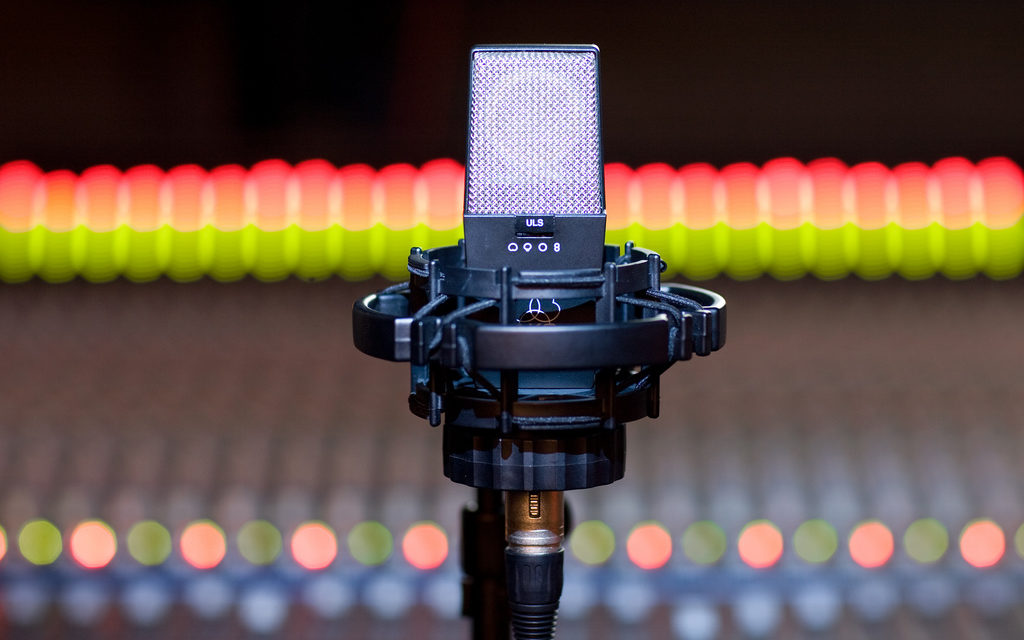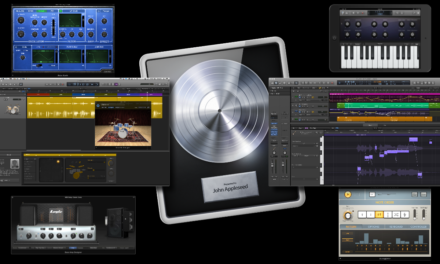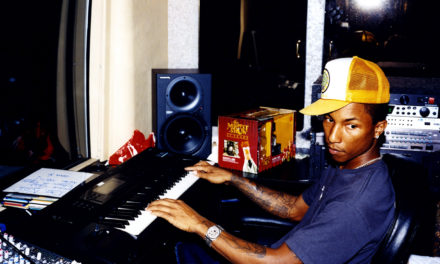Out of all the gear that you have in your recording studio, having a great microphone (or set of microphones) may be the most essential piece of equipment in your studio. What makes choosing a great mic so tricky is that it’s a highly subjective choice. It comes down to what sounds you like better ( a little coloration or more flat), budget, genre of music, and a whole lot more. Our goal here is to provide a comprehensive list of a range of microphones. We can’t cover every single mic for vocals. But this list will give you a great set of options to choose from at multiple different price points. If you’re in need of a new microphone for vocals, this is definitely where you want to start.
Best Microphones For Vocals
How Microphones Work
Before we get into what type of microphones work best on vocals, we need to go over the basics of how a microphone works. Please don’t fall asleep during this section. I actually find the mechanics of a microphone fascinating, but maybe I’m just an audiophile. But regardless of your level of enthusiasm, knowing how microphones work will help you make a better-informed decision based on your situation.
A microphone is a transducer. What that really means is that it converts energy from one form to another. In this case, we’re talking about sound/airwaves being converted into electricity.
The three main parts of the microphone are the diaphragm, the transducer, and the casing.
The diaphragm captures the sound waves by vibrating in tandem with them. The vibrations of the diaphragm are converted into electrical energy by the transducer. And the casing is there to protect the insides of the microphone, but it can also influence the directional response of the mic.
That’s the basis of how a microphone works. But there are a few different ways that a microphone can perform this process. These various methods are known as the three different types of microphones: Dynamic, Ribbon and Condenser. And for someone recording vocals you should be very interested in the accuracy at which the microphone records your vocals. So knowing the difference between each type of mic will be crucial in making your decision.
Let’s take a closer look.
Three Main Types Of Microphones
Dynmaic Mic
Dynamic microphones are the most versatile type of mics and are considered the workhorses of the music industry. They are incredibly durable and can handle louder sound sources (we’ll get to sound pressure levels in a bit). This durability is mostly due to the construction.
A dynamic microphone’s mechanics consist of an electromagnet and a diaphragm. Sound waves cause the diaphragm connected to the coil of the electromagnet to vibrate and create electrical signals. If you remember from high school how a speaker works, think of a dynamic mic as a backward speaker. A funny side note is back in my DJ days I found this out one day out of pure necessity. After forgetting headphones, a friend of mine plugged a cheap mic into the headphone jack of the mixer and to our surprise sound came out of the mic. It wasn’t good enough to truly mix on, but it did open my eyes to how dynamic mics function like speakers.
Dynamic mics are typically on the cheaper side compared to some of the other mic types and this, in turn, makes them very popular. If you’ve had any experience a low budget microphone, it was probably a dynamic.
Dynamic microphones are incredibly durable and insensitive to things like humidity. Because of this they are more often used for live performances and aren’t the go-to for studio recordings. There are a few exceptions to this rule which I include here. But for as far as a microphone type for recording vocals a dynamic mic is definitely not the first choice.

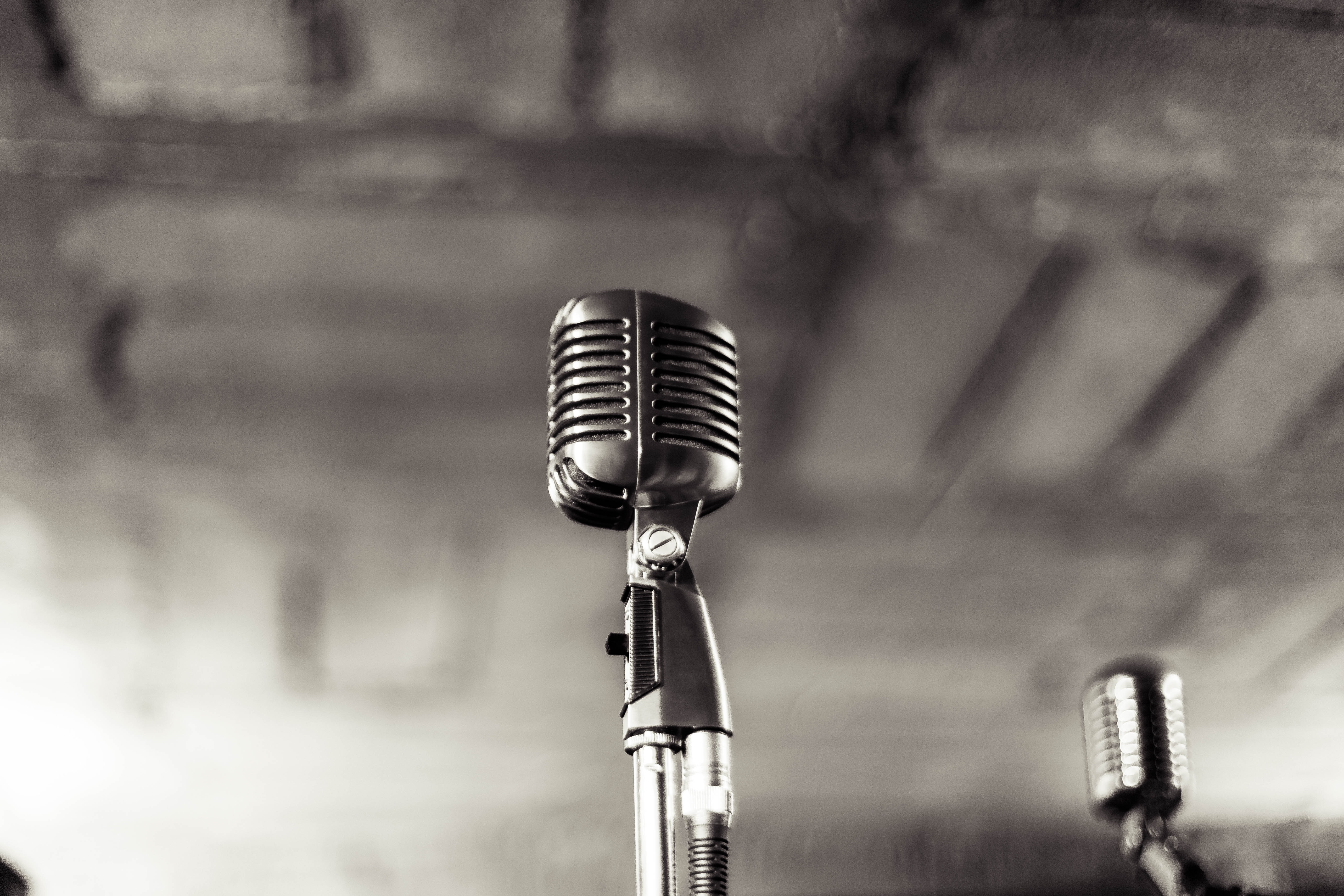
Ribbon Mic
The construction of a ribbon microphone is almost identical to that of a dynamic one. But instead of the coil in the dynamic, a ribbon mic uses a thin strip of aluminum foil that is directly vibrated by the air of the sound waves making a separate diaphragm unnecessary. But because of this construction, the electrical output of the ribbon is incredibly low. So a step transformer is used to boost the signal to proper levels.
Ribbon mics definitely outperform dynamic mics in terms of being able to capture high-end frequencies, typically boasting an upper range of 14kHz. Ribbon microphones are also notorious for recording a much “flatter” sound which makes them great for EQ-ing either live or during the mix.
All of this makes ribbon microphones an excellent choice for recording vocals. However, traditional ribbon mics are really fragile and easily damaged. They also were out of style for an extended period but have made a significant comeback in recent years. You can read more about the history of ribbon mics here.
Condenser Mic
So the funny thing about the term condenser is that it’s obsolete in a general sense but has stayed around to refer to microphones. A condenser is another word for a capacitor which is an electronic component that stores energy in an electrostatic field. In the case of a condenser microphone, the capacitor is converting sound energy into electrical energy.
Condenser mics have two charged plates. The front plate is a very light material which acts as a diaphragm. Sound waves caused the diaphragm to vibrate. This vibration changes the space between the two plates, causing a change in voltage that creates electrical signals.
Like a ribbon mic the electrical signals of a condenser mic are very low, so a transistor is used to amplify the signals to usable levels. This signal boosting is also why you often hear the term fantom power associated with condenser mics because that power is needed for the transistor to boost the signal.
Condenser mics also can produce multiple pickup patterns making them more adaptable in certain miking situations (we’ll discuss pickup patterns more down below).
Of the three main types of microphones, condensers are definitely the best at capturing the entire human hearing frequency range. Condensers typically outperform the two other mic types on high-end frequency response and are sensitive enough to have an excellent low-end frequency response.
Many condenser mics will also have a specific “character” to them as well. This “character” is typically a boost in their response in the 8-12kHz range. And while this may limit the amount of EQ you can put on the mic, the individual character of each condenser mic is what most engineers clamor after.
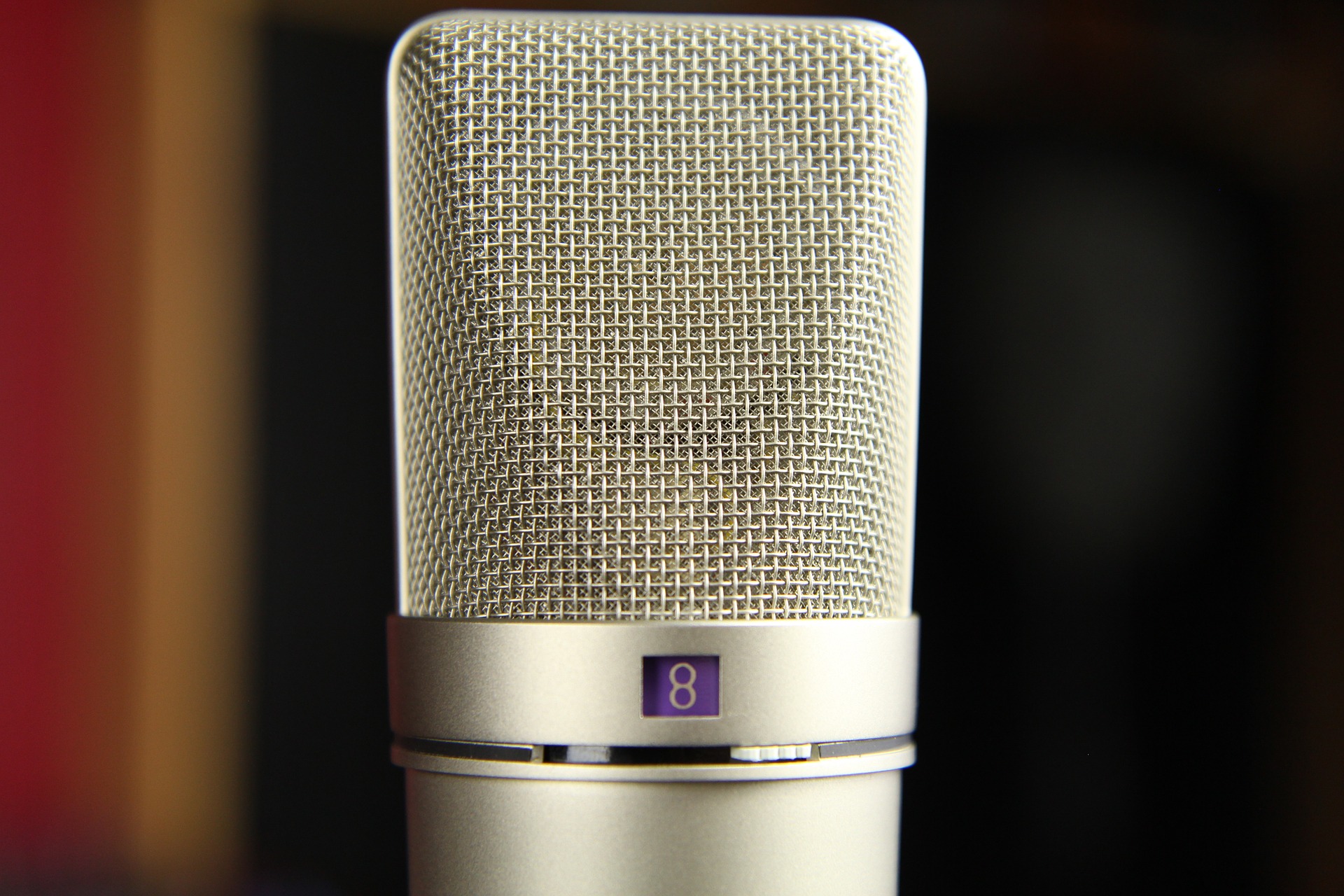
What Type Of Microphones Are Best For Vocals
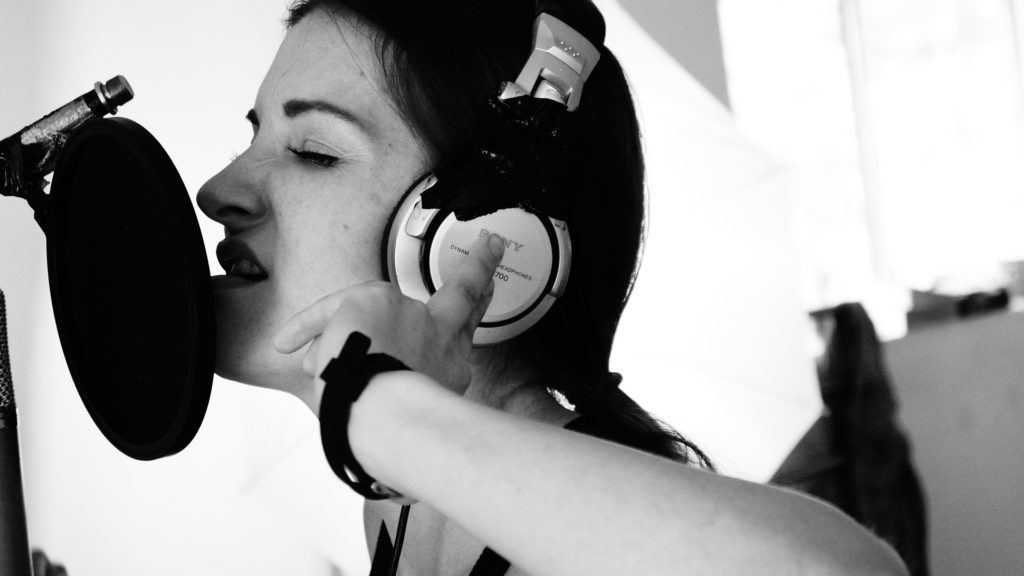 So now that we have a comprehensive understanding of the type of microphones and how they work, what kind is best for recording vocals?
So now that we have a comprehensive understanding of the type of microphones and how they work, what kind is best for recording vocals?
As you may have already guessed based on the descriptions above, I would recommend condenser microphones as the best for recording vocals. Specifically, a large diaphragm condenser would be my recommendation.
Now I must pause and say that there is no hard and fast rule that you MUST use a large diaphragm condenser to record your vocals. Ribbon mics can be great, and Michael Jackson used a dynamic mic to record most of Thriller album. But with better high and low-frequency response and the boost that makes most vocal performances pop, a large diaphragm condenser is going to be the vocal mic of choice the vast majority of the time.
Choosing a large diaphragm condenser has been my experience since I was in recording school to this day. Condensers have always given me the best sounding tracks whether recording rap, R&B, reggae, dancehall or even voiceover work. And once I got used to the different mics I had, I was able to figure the right EQ-ing for the right moment for each one.
Also, many of you will only be having one to three mics to start out anyway, unless you have a budget of a large studio. So having one versatile large diaphragm condenser will undoubtedly be the way to go.
What You Should Be Looking For In Vocal Microphone
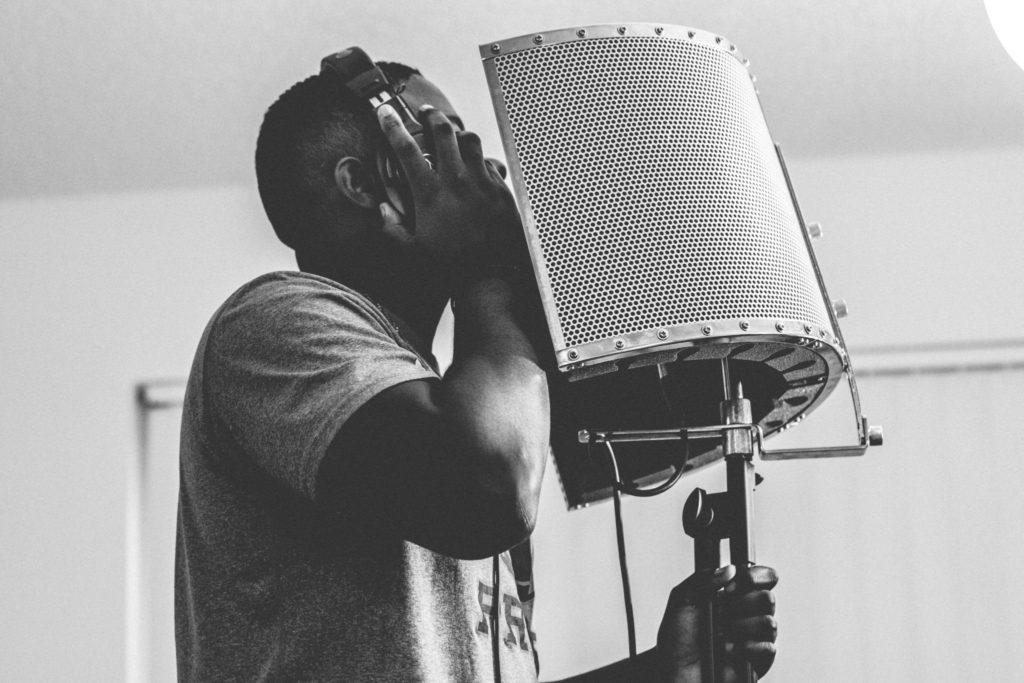 So you know what the best type of microphone is for recording vocals, but what should you be looking for in each large diaphragm mic?
So you know what the best type of microphone is for recording vocals, but what should you be looking for in each large diaphragm mic?
Frequency Response
Frequency response is the range of frequencies a microphone can capture. The human hearing range is between 20Hz-20kHz, so your microphone should be able to capture everything in this range. It is incredibly vital for your mic to be able to record the full spectrum of sound because you want it to be able to reproduce all the harmonic frequencies associated with the voice. Capturing this harmonic range will make your recordings sound professional.
Microphone companies will also always show you a frequency response chart for every microphone they sell. This chart represents how the microphone will perform at different frequencies in the hearing range. A flatter curve is typically preferred so that you’re getting a real sense of what is being recorded. However, most condenser microphones will have a slight boost in the 2kHz to 5kHz range that gives more character to vocals. You can get a better idea of how to read a frequency response chart here.
Sensitivity
A microphone’s sensitivity is the amount of output it produces relative to the input. The more sensitive the mic, the more it will be able to pick up. Sensitivity is a critical factor when recording vocals because they’re a quieter sound source compared to instruments.
Condenser mics, on the whole, tend to be much more sensitive compared to dynamic mics. This sensitivity is another reason to favor condensers over dynamics.
When reading mic specs the lower the sensitivity number, the more sensitive the mic is. Which is more desirable in the case of recording vocals.
Max SPL
Sound pressure level (SPL) refers to the maximum amount a mic can handle before distorting. SPL is not a huge factor when considering a vocal microphone. Most large diaphragm condensers will be more than able to handle even the loudest human voices. However for people on a budget looking for a good versatile mic to record things like drums SPL may be an auxiliary factor.
Pickup Patterns and Cutoff Filters
A polar pattern is the shape of a microphones sensitivity field. As we discussed above, condensers can change their sensitivity field. There are six main polar patterns: omnidirectional, cardioid, supercardioid, hypercardioid, ultra directional and figure of 8.
A cardioid pickup pattern is shaped like a heart, hence the name. This polar pattern means that the mic is most sensitive in the front. This pattern is great when recording something like vocals.
The other variations of the cardioid pattern give some more flexibility in terms of isolating a sound source. Check here for a more in-depth look at the different patterns.
Omnidirectional gives the mic a 360 sensitivity field, and a figure 8 pattern is what it sounds like: an eight like pattern. These two patterns are great for recording group vocals with more than one singer.
Choosing a mic with multidirectional patterns will give you some increased flexibility in how you’re able to record in different situations. It has always been something that I have coveted in my mic choices. http://www.akglife.com/polar-patterns–part-2-cardioid–technology
Cutoff Filters
Cutoff filters are EQ’s built-in into the mic. A high pass filter (HPF) will cutoff lower frequencies, and a low pass filter (LPF) will do the opposite.
Many will argue that there is no need to do this at the microphone as it could be done on a preamp or with any equalizer (analog or digital). However, I think there are definite instances where you’ll want to roll off frequencies directly at the source. The most common case I usually run into is low noise in a home studio setting. A lot of times it’s great to have a mic that can cut out some of the noise that you get at home because it’s not an entirely soundproof space.
Mic Specs vs. Your Ears
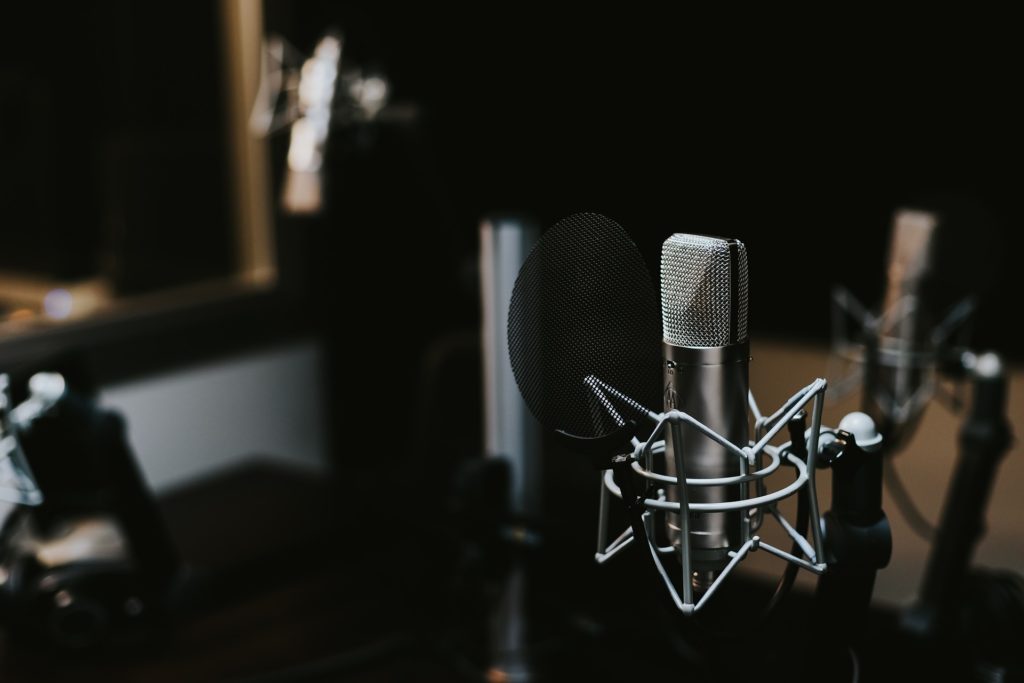 Knowing how to read mic specs are crucial when choosing the best microphone for vocals. But specs can only go so far. They tell you a ton about the mic, but ultimately the best assessment of a mic will come from your ears (and the ears of others).
Knowing how to read mic specs are crucial when choosing the best microphone for vocals. But specs can only go so far. They tell you a ton about the mic, but ultimately the best assessment of a mic will come from your ears (and the ears of others).
For this reason, whenever I’m looking for a new mic (or any studio equipment), I try to listen to it in person before I buy it. My first option is going to a local music store and asking them if I can listen to it. In many places, you can also rent a mic to get some in-person time with it.
I also rely on friends in the industry to see if I can borrow mic for a short period to see if I like.
Relying on other people’s ears is also crucial, so reading reviews from reputable sites (like this one) are always great. But even the individual reviews on online stores will tell you a great deal.
And as a last resort, I also like to listen to recordings of the microphone I’m looking at online as well. There are a ton of these comparison videos for almost every mic on youtube.
What’s Your Budget?
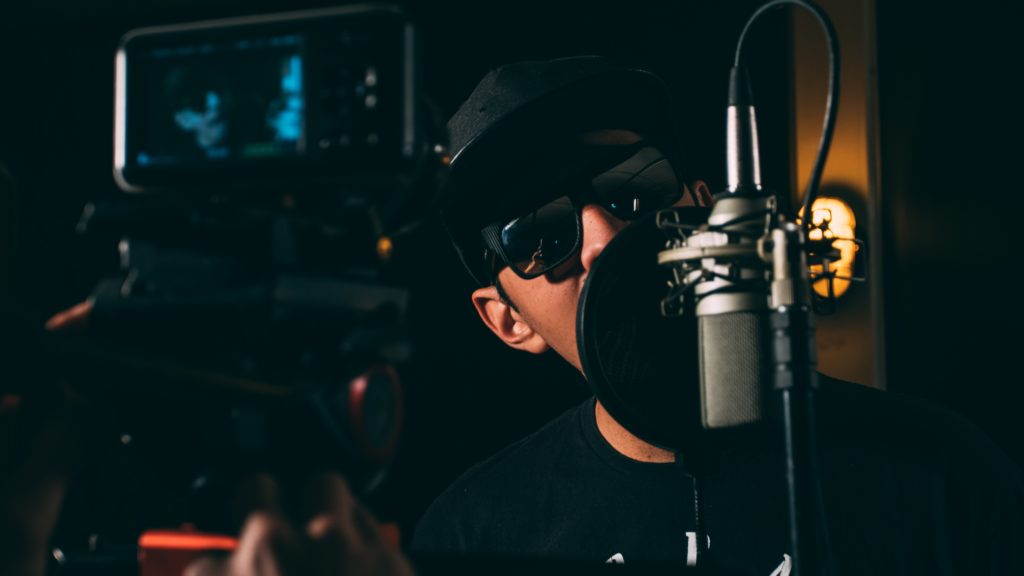 While arming yourself with the right knowledge to make an informed decision is always a good thing, most buying decisions naturally come down to one thing: price.
While arming yourself with the right knowledge to make an informed decision is always a good thing, most buying decisions naturally come down to one thing: price.
The recommendations I give try to cover a wide range of budget options. However while many people will claim that you can get a professional sound for $100 or less, that just hasn’t been my experience. We don’t all have the money to buy top of the line equipment, but investing in an excellent vocal mic will be well worth your while to achieve a great sound.
I also considered the fact that most people can’t build a large mic locker like a big studio. So while these are the best microphones for vocals, they are also great for many other instruments like acoustic guitar.
Rode NT2-A
The Rode brand has made quite a name for itself in the pro/semi-pro communities over the past decade and a half. The company was one of the first to introduce affordable, high-quality microphones from China. But in the mid-2000’s they moved all the manufacturing to Australia and started a state of the art manufacturing process that the company refers to as the Rode difference. While Rode has a myriad of exceptional microphones, the Rode NT2-A is one of the best microphone values out there.
The Rode NT2-A is a large diaphragm condenser microphone that’s as versatile as they come. It features three pickup patterns – cardioid, omnidirectional, and figure 8, high pass filters of 80Hz and 40Hz, and a pad adjustment at 5dB or 10dB. All this adds up to an incredibly customizable recording experience. The filters are especially useful for home studios where there’s often some low-level noise to be rolled off.
This mic is one of the first pro microphones I bought for vocals. I’ve owned it for a decade and never been disappointed. One of the first things that will stand out to you is how quiet the microphone is. The input noise level of the NT2-A just 7dBA.
On vocals, this mic really shines. In my experience, it produces a solid top end without sounding too harsh, and the low end is very detailed and robust. The NT2-A gives a transparent sound. It’s so accurate that some engineers don’t like the brutal honesty and would prefer some more coloration.
The professional sound, versatility and incredibly affordable price make the Rode NT2-A a near must buy.
- Extremely quiet
- flat response
- cuts around 3kHz and 8kHz (problem areas)
- ideal for users who only want to buy one microphone for their home studio
- Subtle presence peak should work well on most voices as well as being able to record acoustic guitars and pianos successfully.
- Impressive signal-to-noise ratio, meaning that even the quietest of singers should be able to get good results with it -producing recordings that sound natural and uncolored.
- So flat that some people may be looking for more coloration?
- Cheaper Packaging
- Top end is a little harsh, especially on p’s and s’
Neumann TLM 103
When you’re talking about the best studio microphones, it’s impossible not to bring up the Neumann name. The German company has been synonymous with great mics since the 1920s and helped pioneer the high-end condenser mic market. While there are numerous phenomenal Neumann mics for vocals (we could make an entire list of just Neumann), the TLM 103 is the best combination of quality sound and price.
The TLM 103 is relatively newer mic compared to the classic, and it encompasses the Neumann quality and sound at a lower cost. This mic is genuinely made for vocals. You won’t find any polar switches or pads on this mic. It’s often described as a “universal cardioid mic.”
On vocals, this mic produces a fantastic sound with just the right amount of coloration in the high end that creates excellent clarity and brilliance. The proximity effect on the TLM 103 also gives its bass response that extra oomph without being too much in your face. It’s also extremely sensitive and will pick up literally everything around. So much so that when I’m using this mic in my home studio, I always have to run it through an HPF to get rid of AC and computer fan noise.
While the TLM isn’t a budget mic (Neumann doesn’t make budget mics), it’s a real professional mic with a desirable vintage sound at a fraction of the cost. If you can afford it, I’d definitely recommend it even over its little brother the TLM 102.
- Studio quality Neumann Sound for a fraction of the cost
- Frequency peak is excellent for vocals
- Very nice, sparkly top-end, that doesn’t become too harsh if used the right way.
- So sensitive it picks up a lot of ambient noise
- No cutoff filters or pads
Shure KSM- 32
Shure is one of the most famous American microphone companies. Established in the 1920’s like some of its German counterparts, they have been making great microphones for a long time. Most people are familiar with the company’s popular dynamic mics, but they make a great line of large diaphragm condensers for vocals. The Shure KSM32 fits the line of quality and performance.
The KSM32 is a single pattern cardioid condenser with position switches for two low-frequency cutoffs and a pad to handle louder sound sources like drums.
On vocals, the KSM32 is balanced on all frequencies. It provides rich and smooth lows and balanced highs. And although the mic has a presence peak at 7kHz in the midrange and 10kHz in the high end, the sound it produces is still incredibly transparent. I can remember using this mic in school and thinking that it was very hit or miss until I realized that it was just reproducing whatever was in front of it. Which meant it wasn’t the mic that was varying but the performances.
The transparency of the Shure KSM32 makes it a go-to for a lot of engineers and producers who like the flexibility to be able to control their sound coloration through their EQ-ing. So long as you know how to achieve the best performance out of your vocalist, the KSM32 will always be an excellent choice.
- Incredibly accurate reproduction of vocals
- Rich, smooth lows and great clarity on highs
- Very versatile on acoustic instruments and drums
- Perhaps the only drawback to this unit is the fact that it is strictly cardioid.
- Presence peak at 6kHz can seem “buzzy,” but this is a matter of preference.
- The flat response can throw some people off looking for more coloration on vocals
AKG C414 XLII
The AKG C414 is one of the most recognizable professional vocal microphones and for a good reason. AKG has been making great microphones since the mid 20th century. The company’s legendary CK12 capsule was designed in 1953, and it propelled AKG as one of two dominant players in the large diaphragm condenser vocal microphone market. This capsule would eventually evolve into the C414.
Over the past 50 years, the AKG C414 has gone through many changes. Today, it comes in two options the C414 XLS and the C414 XLII. The C414 XLII has a more distinct presence peak around 3kHz which in my experience make it better suited for recording vocals.
The AKG C414 XLII is easily one of my favorite mics for vocals. The mic comes with 9 polar pattern choices and three high pass filter options, that gives you 27 distinct tonal adjustments that can be done directly on the mic. With this much flexibility, it’s hard not to get a good sound with the mic.
I’ve owned this mic since 2012, and on vocals, it always produces a clear rich sound with a detailed low end. Coupled with how versatile it is on other instruments as well, if I had to choose just one mic it would be the AKG C414.
- 27 distinct tonal adjustments you can make directly on the mic.
- Clear Sound
- Compact
- Durable
- Easy To Use
- Versatility
- Vocal Clarity
- Some people think it’s too accurate which can make it seem a little “flat.”
- Very fragile even for a condenser mic
- Polar patterns have to be set after turning on the phantom power. Can be mildly frustrating to do every time.
Audio-Technica AT4050
Audio Technica is a Japanese company known for making a range of more affordable to high-end condenser mics. The company is interestingly known for supplying the US Presidential debates with microphones for over 20 years. When it comes to condenser microphones for vocals, Audio Technica has such a vast price range, and it is sometimes hard to determine which one of the company’s many offerings make sense.
This is where the AT4050 fits in. It’s a near perfect mix of providing a pro-level sound at an affordable price.
The AT4050 comes with three polar pattern selections cardioid, omnidirectional, and figure-of-eight. And it’s dual-diaphragm capsule design to maintain the precision of the polar pattern definition.
While I’ve never owned an AT4050, my experience using them in different studios have always been impressive. What you’ll get out of this mic is a clear sound with full low ends and low mids, which shines on vocals. The recording from this mic won’t give that vintage “warm” feeling. But instead of feeling sterile like some newer budget mics, the AT4050 provides you with a sound that feels modern and up to date.
The preciseness of the mic on the low end, mid-range and it’s transparent high end makes it a no-brainer microphone for vocals.
- Heavy duty and durable. Can even be used for live gigs
- Very well priced for a pro mic
- Dual-diaphragm capsule design to maintain the precision of the polar pattern definition
- Combination of transparent uppers/mids balanced by rich low-end qualities and leading-edge engineering
- Shock mount it comes with is not great, so worrying about that might earn a demerit
Neumann U87
While many people don’t have the budget for the Neumann U87, it was hard for us to do a “best microphone for vocals” without mentioning it. The U87 has been the go-to microphone for the pros for decades. Almost every major hit performer has recorded on one, and this is for a good reason.
The Neumann U87 is probably the best at creating that clear warm vintage sound that so many people covet. The U87 is another mic I’ve never owned, but when I’ve used it in professional studio settings, it lives up to its reputation every single time. It will amaze you that you won’t have to EQ or compress the sound much because the sound produced by the mic is near perfect.
The U87 comes with some standard filter cutoffs and polar pattern switches. But that’s not why you get this mic. It’s all for the sound. The only problem is that it’s out of most people’s price range.
- Great warm vintage sound
- Popular high-end mic that will impress clients
- Out of many people’s price range
Conclusion
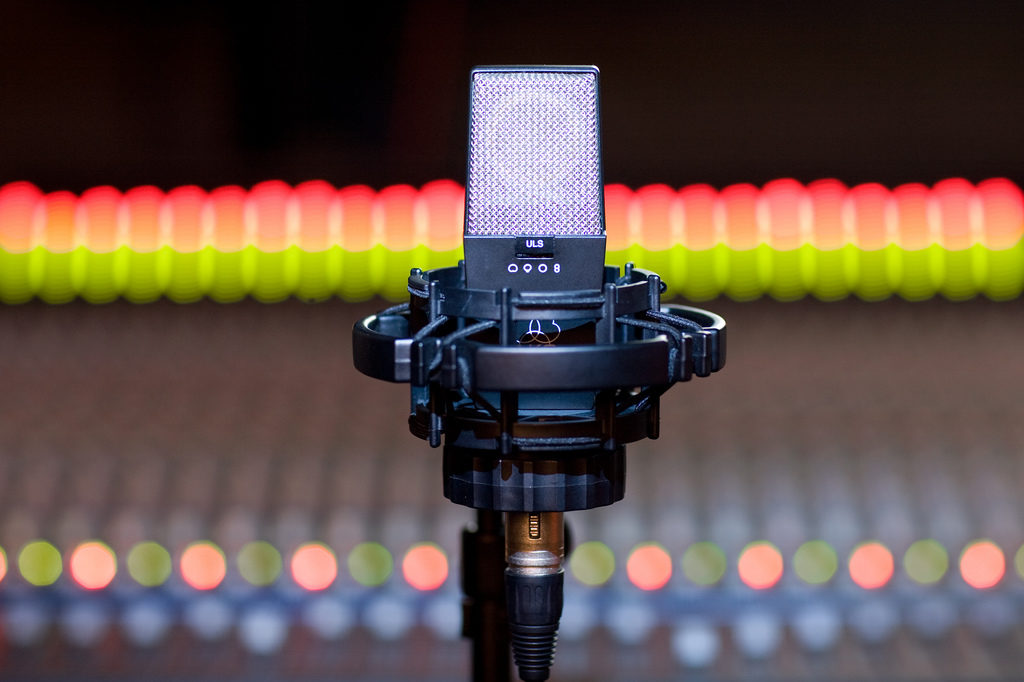 While all the microphones on this list are great for vocals, the clear winner is clear. The AKG C414 provides the most bang for your buck in terms of creating a quality sound, list of onboard features and having a recognizable name for clients.
While all the microphones on this list are great for vocals, the clear winner is clear. The AKG C414 provides the most bang for your buck in terms of creating a quality sound, list of onboard features and having a recognizable name for clients.
The 27 different tonal adjustments that can be made on the mic gives it a vast flexibility that can be applied to a myriad of different situations. And the detailed clarity created in the mid-range makes this mic shine through for vocals.
Rode’s NT2-A comes in at a close second because it’s also incredibly customizable and creates a great sound. Not to mention it’s hard to beat at the price point. However, while the transparent sound of the NT2-A is really accurate, it lacks the “shine” provided by the AKG C414 on vocals.

